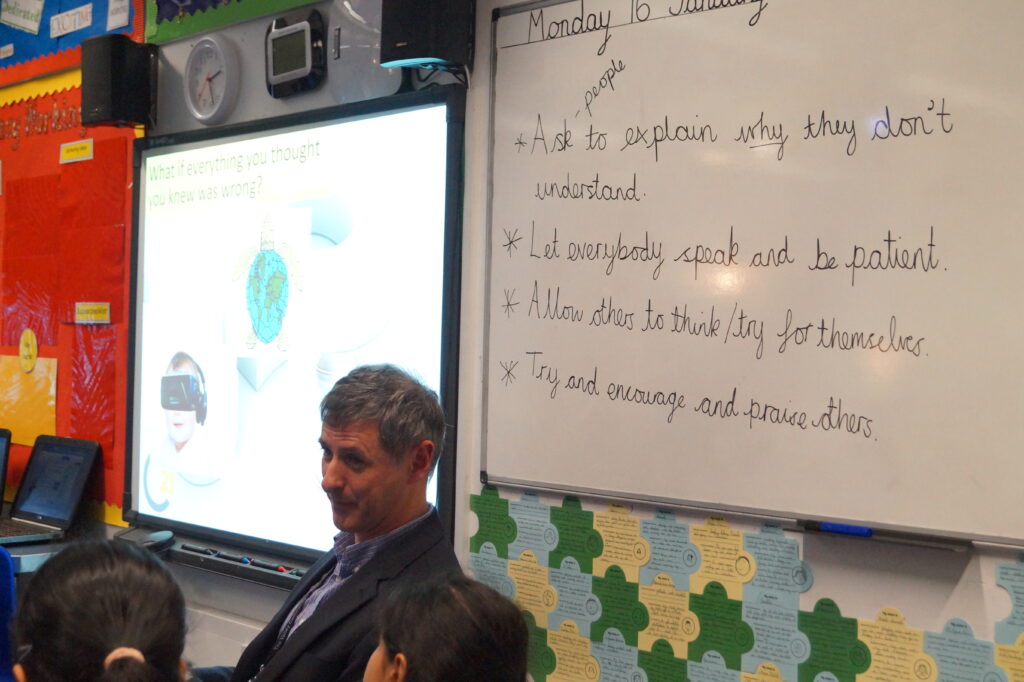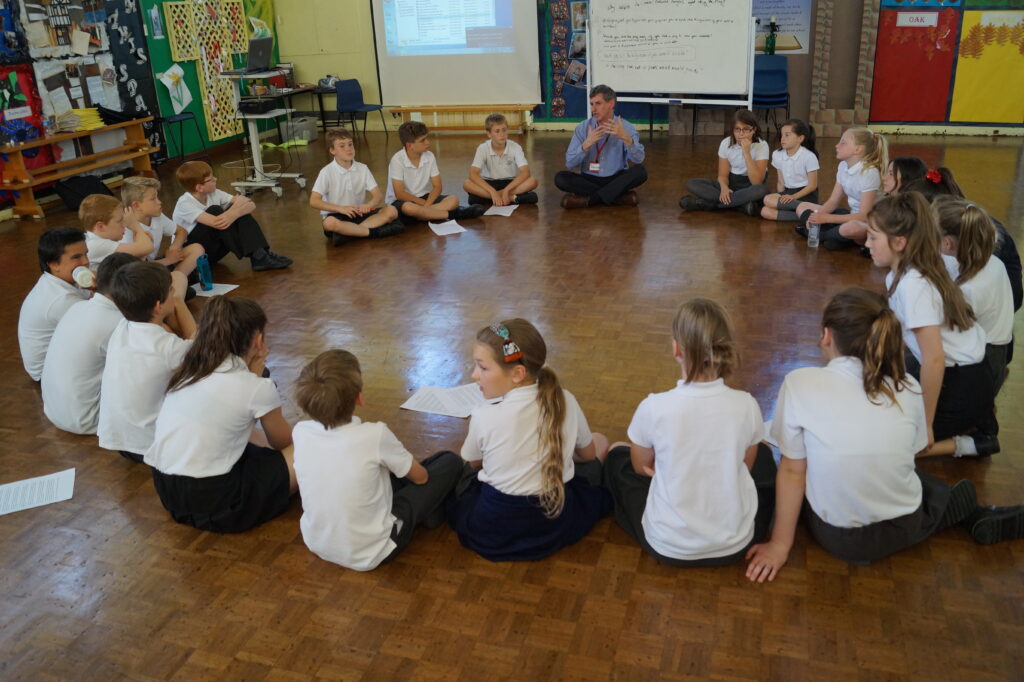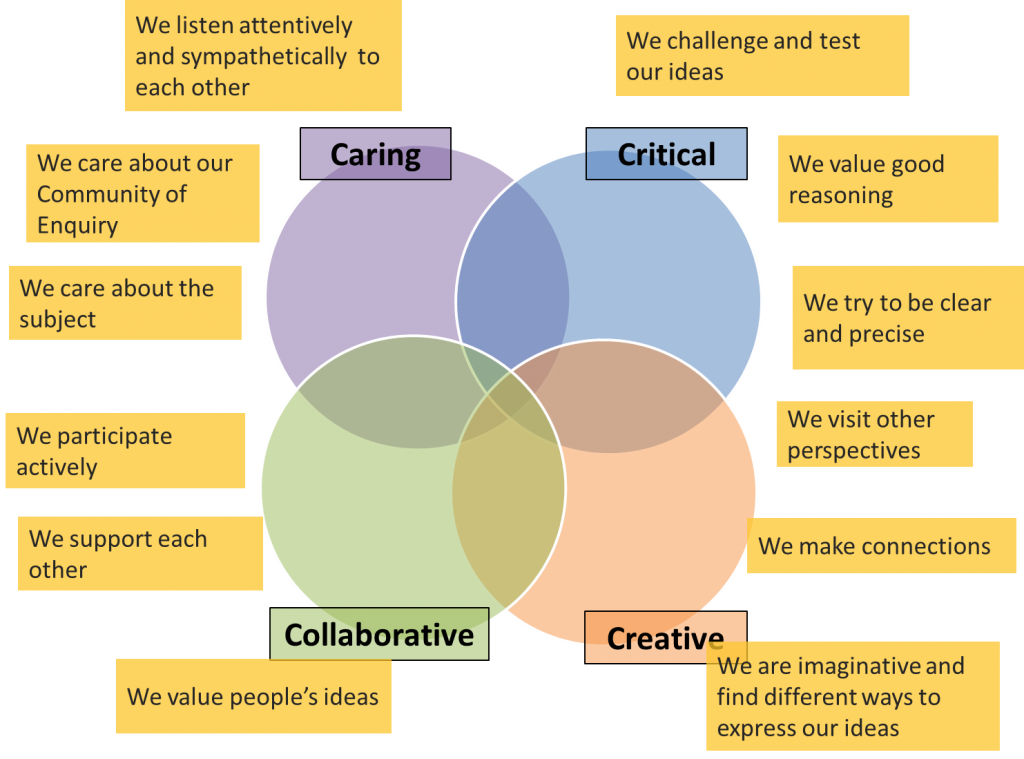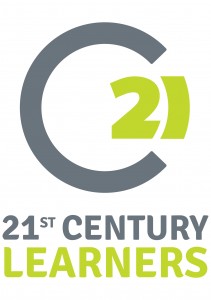A Teacher’s Guide to Dialogic Pedagogy Part 4: Teaching for Dialogue

Posts 2 and 3 of this series focus on the role of the teacher in dialogic pedagogy. In Post 2 Mortimer and Scott’s categorisation of the different communicative approaches available to the teacher are offered as a basis for reflection on the different types of classroom talk and their purposes. In Post 3 the role of the teacher in facilitating dialogic / interactive talk (or Thinking Together) is explored. In this post we turn our attention to the role of the students in creating an environment in which Thinking Together becomes possible and can flourish, allowing them to make meaning of what they have been taught.
A Difficult Truth
It is not possible to ‘make’ dialogue happen. A teacher can be orientated to dialogue and ask all the questions and make all the moves suggested in Post 3, and the students can still respond in a closed way. If there is no real interest in or care for the subject under discussion, then dialogue will not happen. If students fear that ‘wrong’ responses will lead to humiliation, then dialogue will not happen. If students are continually asking themselves what it is that the teacher wants them to say, then dialogue will not happen. I could go on. Meaning making requires different perspectives to be shared, understood, and brought into tension with each other, and it requires students to care and to take up the invitation to find their voice and to express new ideas in their own words in response to the words of others. It is an active process, and we cannot force students to act.
Perhaps all this hints at a difficult truth: dialogic pedagogy will not bear fruit overnight. It is not something you can do to your students, but something you have to create with them. Dialogue is born out of relationship. It is contingent on your ability to reveal the beauty of your subject and to connect it to students’ lives, to stretch out your hand and offer to lead the way on an effortful journey, and it is contingent on them grasping that outstretched hand. Such relationships don’t form overnight, but are built with care over time. At the end of this post I will discuss the idea of the Community of Enquiry, which in my experience has been the most effective way of building such relationships and creating the space in which dialogue is possible. But let’s start with something simpler.
Ground Rules
While there is no algorithm that students can follow to lead them into dialogue, there are skills and dispositions that make dialogue more likely, and deepen it when it happens, and these can be learned. One way of introducing them is to articulate them as a set of ‘ground rules’ to be followed when Thinking Together is required (whether that be in small groups without the teacher, or in a whole class facilitated dialogue). The ground rules can be offered by the teacher, but they can also be co-constructed with the students. In my experience the co-construction model works best; it is dialogic in itself in that it values the students’ ideas, and, as the rules are kept under review and modified in the light of experience, it models the idea that our current knowledge and understanding is provisional and ever-evolving. Here’s one way of running an introductory session:
- Ask the students to match phrases such as ‘a lecture’, ‘a chat’, ‘a speech’, ‘a squabble’, ‘a debate’, ‘a Q&A session‘ and ‘a dialogue’ to corresponding images (artists’ illustrations work well) or film clips. What distinctions do they make between these different types of talk?
- Enquire as to whether the different talk types could be used for different purposes. Which do they experience in the classroom? (Older students might be interested in the communicative approaches discussed in Post 2, and might even take on a role as co-researchers, monitoring their use in the classroom);
- Consider which talk type(s) might be most useful when working together to solve a maths problem, sharing thoughts in response to a piece of writing, film, music or poetry, or planning a science experiment;
- Does this change if the teacher is present? What if the teacher doesn’t have the right answer, or at least is interested in more than one answer?
- Think together about how you would all need to behave in order to make talk in the above contexts productive. What ground rules would you need to follow?

The suggested rules will serve as a starting point, but should not be ‘set in tablets of stone’. The authors of the original Thinking Together materials (Neil Mercer, Lyn Dawes and Rupert Wegerif) intended that the ground rules used would emerge from the students’ developing awareness of what worked and what did not work for them; they would be somewhat different in each context and would evolve during a period of reflective practice. They suggest that some common features that might be expected from a useful set of ground rules include commitments to:
- sharing relevant knowledge;
- listening to everyone’s ideas attentively and treating them respectfully;
- accepting that claims should be challenged and that the reasons underpinning claims and challenges should be shared and explored;
- actively seeking and considering alternatives before any decisions are taken;
- taking shared responsibility for decisions;
- reaching agreement whenever possible.
Neil Mercer points out that encouraging students to reach agreement is thought to be valuable as it encourages students to engage more deeply with the views of others and to give more consideration to their own ideas and the reasons underpinning them.
The Importance of Reflection
Whatever the set of ground rules that are established, deliberate and reflective practice is essential if they are to have the desired impact on the quality of talk. The value of metacognition and self-regulation to effective learning has become well-recognised (you can find a useful summary of the evidence from the EEF here ). Metacognition involves developing a conscious awareness of the strategies used to tackle a problem and developing the capacity to evaluate the effectiveness of these strategies and adapt and apply them accordingly. The ground rules represent an explicit statement of the strategies used to make Thinking Together effective. Teachers can guide students to identify when specific ground rules are being followed and to reflect on the impact they have on the dialogue and on progress towards tackling the problem at hand. Reflection on the ground rules and their application may prompt some revision of the rules and it will allow the group to identify skills and dispositions that they need to focus on.
Making Progress
If you want to take Thinking Together a little further, then you need to think about the notion of progression. You might start by exploring the way that language can be used as a tool for Thinking Together. Consider these ‘sentence starters’: how might they add to the students’ ability to enact the ground rules and Think Together?
- I think… / I believe… / In my opinion… (because)…
- I wonder if… / Maybe… / What if…?
- Go ahead, X…
- I think what X is saying is…
- Let me explain that more clearly…
- An example of that is…
- So in summary…
- Building on something X said…
- I agree with / disagree with X (because)…
- I see what you are saying, X, but…
- I think I have a different point of view to X…
- I think there is another way of looking at this…
- My reasons are…
- The evidence for that is…
- I think there is a distinction between…
- I think X and Y are connected…
- I think I’ve had an experience of this…
You might not introduce so many possibilities all at once, but rather start with simple examples that encourage students to share their ideas and build from there. Useful language can be on display for the students during episodes of Thinking Together. Discussing the language and its use, and trying it out in skills building sessions might be valuable. What’s the difference between ‘I believe…’ and ‘I wonder if…’? What different functions do they perform? As their dialogue develops in sophistication, consider what further language would support them. (As you consider adding to the range of cognitive moves that are consciously made during these sessions, Thinking Moves A-Z from Dialogue Works has a great deal of potential to add value).
You may also find it useful to introduce students to the questions suggested for teacher use in Post 3. It is desirable that the students take increasing ownership (self-regulation) of the Thinking Together process and come to see learning as an active process of shared enquiry, so challenge them to ask each other the questions that encourage elaboration, seek to understand, search for connections and distinctions and so on. You can find more extensive suggestions for useful language (questions and response stems) on the spreadsheet shared in this post.
You may want to introduce some simple skills-building activities. For example, an activity I have used to explore ways of disagreeing with others can be seen here. A group wanting to develop their capacity to seek to understand each other might find an activity like this helpful.
By ‘teaching for dialogue’ in this way we begin to give the students the tools they need to create spaces in which they can Think Together and socially construct meaning. The use of ground rules is a simple approach that need not take up much time and will help to transform the classroom culture. I want to end this series of posts by sharing another powerful approach that has the potential to transform schools and to have an impact on the wider community.
The Community of Enquiry

The Community of Enquiry (CoE) has its roots in pragmatic philosophy and was appropriated for use in Philosophy for Children (P4C) by Professor Matthew Lipman in the 1960s. Groups practicing P4C put time aside (perhaps an hour per week) for raising and Thinking Together about philosophical questions. The group becomes a CoE as they develop a sense of care for each other and for the questions and concepts they explore, as they learn to collaborate – to identify with the group in all its plurality – and as they develop the critical and creative habits of mind needed to make progress towards ‘good’ answers. They are supported in this endeavour by the 4Cs framework, which I think offers a more nuanced and holistic approach than a simple set of ground rules :

Ground rules can be built up to articulate what each of the 4Cs involves (those shown above are just an example), and over a period of reflective practice these ground rules can increase in sophistication, allowing the CoE to make progress. I have written about the 4Cs here, and here I have shared some resources for the development of progress over time.
In my experience this practice is a very effective way of learning to engage in dialogue – for students and for teachers. The open nature of the philosophical questions asked in P4C mean that the normal ‘rules of the game’ of classroom talk (see Post 1) are changed. The absence of ‘correct answers’ makes it easier for teachers to practise facilitation, for students to realise that their ideas are valuable to the process of building shared understanding, and for all to understand the value of different perspectives.
I would always argue that dialogue is a profoundly important end point in its own right, as are the care and wisdom developed through P4C. But a CoE soon realises that dialogue and dialogic enquiry aren’t constrained to the P4C session, but rather they spread out from this source. With a little encouragement (such as the use of the facilitation techniques shared in Post 3) they spread across the whole curriculum, with teachers and students being more able to identify occasions when they are valuable and being more confident to Think Together. And these forms of talk and thought spread beyond the boundaries of the school and into the lives of the participants and through them into the wider community where they are so badly needed.
P4C is more expensive to implement and more time consuming than the approach to Thinking Together described in the rest of this series of posts, but is very much worth considering if your school is committed to dialogic pedagogy.
Conclusion
In Post One I make the case for the value of dialogic pedagogy in terms of its impact on teaching and learning, its impact on thinking (both together and as an individual) and its impact on democracy. I believe that dialogue represents a better way of being, and is desperately needed in today’s divided world. Teaching students how to Think Together should be a central goal of schooling, not just because it improves attainment, but because it improves our experience of life. By extension I feel that dialogic pedagogy should be a part of Teacher Education.
There is no switch or procedure that can produce dialogue in any given context, but if we care enough to allow our interest in the other to possess us for a while, then we are likely to find a way in. Ultimately I think it is our orientation to difference that determines our access to dialogue – difference about politics, religion, football or the best way to solve a maths problem. As long as we are afraid of difference, the way will remain shut, but if we allow ourselves to be drawn towards difference, if we push our way in there to see what there is, then we may find that difference is the ‘crack through which the light gets in’ or the opening of spaces of dialogue and of mutual learning and meaning making. It is the differences between us that make it possible to Think Together. Hopefully some of the ideas shared in these posts will help to enhance your experiences of thinking, learning and living together in the classroom.
If you would like to know more about any of the approaches to dialogic pedagogy described on this website, then please do contact me.
Bibliography
Dawes, L., Mercer, N. and Wegerif, R. (2000 2nd Edition) Thinking Together: A Programme of Activities for Developing Speaking, Listening and Thinking Skills in Children aged 8-11. Birmingham: Imaginative Minds.
Materials and references for Thinking Together are available on the University of Cambridge website https://thinkingtogether.educ.cam.ac.uk.
Littleton, K. and Mercer, M., (2013). Interthinking: Putting Talk to Work. Abingdon and New York: Routledge
Wegerif, R., & Phillipson, N. (2016). Dialogic Education: Mastering core concepts through thinking together. Abingdon and New York: Routledge.
Acknowledgements
This post draws heavily on the Thinking Together approach developed by Neil Mercer, Lyn Dawes and Rupert Wegerif. I am grateful to them for the opportunity to build on their work. It’s fair to say that Rupert Wegerif has influenced all of my thinking about dialogue, and I am sure that he will recognise that influence throughout these posts.


